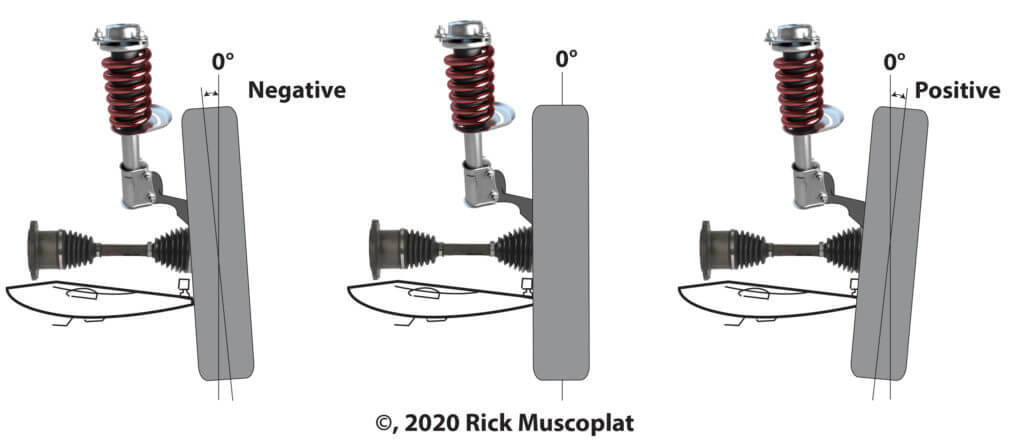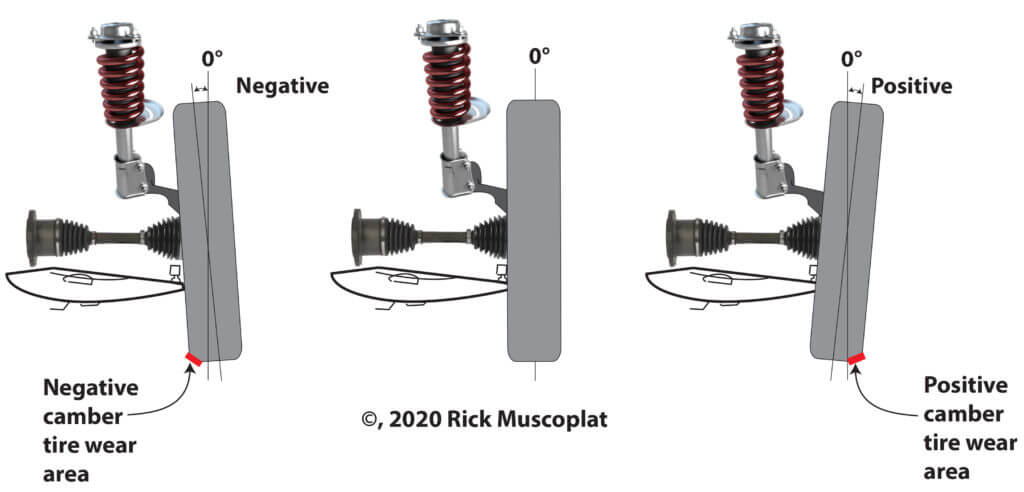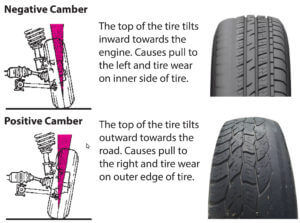How Camber Works: Understanding Tire Tilt and its Effects
The Impact of Camber on Vehicle Performance and Safety
When discussing vehicle dynamics, one term that often comes up is “camber.” It’s a seemingly simple concept but it plays a critical role in how a vehicle handles, corners, and performs under various driving conditions. Understanding how camber works can greatly enhance your appreciation for automotive engineering and vehicle performance. This article delves into the nuances of camber, its impact on vehicle handling, and its practical implications for drivers.
What is Camber?
Camber refers to the angle of a vehicle’s wheels relative to the road surface when viewed from the front or rear of the vehicle. Specifically, it is the tilt of the wheel from vertical. If the top of the wheel tilts outward, away from the vehicle, it’s known as positive camber. Conversely, if the top of the wheel tilts inward, towards the vehicle, it’s called negative camber.
Positive Camber—When the top of the tire/wheel is pointed out
Negative Camber— When the top of the tire/wheel is pointed out

The Mechanics of Camber
Positive Camber— Positive camber occurs when the top of the wheel is tilted away from the vehicle. This setup is less common in modern vehicles but is sometimes used in off-road vehicles or specific types of race cars. Positive camber can enhance stability during straight-line driving and off-road conditions by distributing the load more evenly across the tire. However, it may lead to uneven tire wear on the inner edges, reducing overall tire life.
Negative Camber— Negative camber, where the top of the wheel tilts inward, is more prevalent in sports cars and performance vehicles. This configuration improves cornering performance by allowing the tires to maintain better contact with the road during turns. When a vehicle corners, the forces applied tend to push the tire sideways. A negative camber helps counteract this force, reducing the chances of losing traction. This setup also improves grip and enhances handling precision, making it a favorite among racing enthusiasts and driving purists.
How Camber Works to Affect Vehicle Handling
1. Tire Contact Patch— One of the primary functions of camber is to optimize the tire’s contact patch with the road. During cornering, the outer edge of the tire bears more load. Negative camber ensures that the tire maintains an optimal contact patch, which is crucial for maintaining grip and stability. Without sufficient negative camber, the outside edge of the tire would wear prematurely, and the vehicle might experience understeer or reduced cornering performance.
2. Cornering Performance— In high-performance and racing applications, negative camber is essential for achieving sharp, responsive handling. As the vehicle turns, the tire’s contact patch becomes more aligned with the road surface, enhancing grip and reducing the likelihood of skidding. This results in improved cornering speeds and better overall control of the vehicle.
3. Straight-Line Stability— Positive camber can contribute to greater straight-line stability. For vehicles designed primarily for straight-line performance or off-road driving, positive camber helps maintain stability by ensuring that the entire tire surface contacts the road during straight driving. However, this benefit is often at the expense of cornering performance.
How camber works to affect tire wear
When the camber alignment angle is out of spec, the tire will wear on either the inner or outer tire shoulder. depending on whether the camber is too positive or negative.
In addition, you’ll have reduced handling/stability because there’s less rubber in contact with the road. This loss of grip negatively impacts handling, braking performance, and stability.
The effect of improper camber angle on driving and handling
Excessive camber can cause the vehicle to pull to one side. This happens because the tire/wheel is tilted so it’s much like you’re driving on an ice cream cone. If you’re constantly correcting your steering in one direction, excessive camber is a common cause.


How is camber adjusted during an alignment?
On a vehicle equipped with a McPherson strut suspension, the camber is adjusted at the point where the strut connects to the steering knuckle or where the strut mount connects to the strut tower.
In short-arm and long-arm steering systems, the camber is adjusted by inserting or removing shims in the space where the control arm connects to the frame of the vehicle.
What causes the camber angle to change or be out of spec?
There are several common causes that can knock a vehicle out of its proper alignment specification:
1. Hitting potholes or curbs – Striking objects in the road can bend the control arm, strut and even the steering knuckle. That would change camber. Hitting a curb is the most common cause of improper camber angle.
2. Worn suspension parts – As steering and suspension components like ball joints, bushings, and control arm bushings wear over time, it allows more movement and that can change camber.
3. Improper repairs or installations – If a damaged component is replaced incorrectly, neighboring geometry may be thrown off.
The fix for any alignment issue is to get a proper wheel alignment service. This procedure uses an alignment rack or sensors to measure alignment angles. Adjustments are then made with precision equipment to dial the wheels back to the intended specification. This restores proper handling, safety, and tire wear.
©, 2020 Rick Muscoplat
